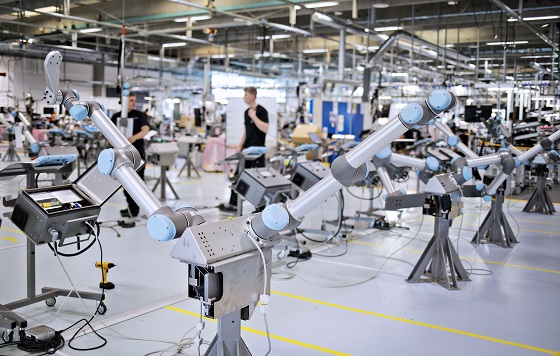“Denmark continues to rank amongst the world’s leading robot nations, delivering a strong 12% growth last year and even higher rates in segments such as collaborative and mobile robots. Global labour shortages at end users are fuelling demand for automated solutions and extending deployment of Danish robotic and drone technologies to new sectors such as logistics, retail, construction, healthcare and energy,” says Mikkel Christoffersen, CEO, Odense Robotics.
“Odense Robotics is also proud to reveal the first ever figures for Denmark’s robotics industry’s role in the green economy. A staggering 78% of companies provide solutions that contribute to customers’ green transition and/or circular economy – showing unequivocally that robot, automation and drone companies play a key role in the global green value chain.”
Report published today
The figures are published today in Odense Robotics Insight Report 2022, the first analysis of Denmark’s robotics, automation and drone industry from the national cluster.
- Strong growth last year generated EUR 2.8 billion (DKK 21.1 billion) in turnover, including EUR 1.5 billion (DKK 11 billion) in exports for Denmark’s robot, automation and drone industry.
- Positive outlook on 2022 and through to 2025, where turnover forecasts reach EUR 5 billion (DKK 37.2 billion).
- More than EUR 900+ million (DKK 6.7 billion) has been invested in robotics companies in Denmark since 2015.
- First ever figures for the industry’s role in the green economy show that 78% provide solutions that contribute to customers’ green transition and/or circular economy.
- More than 400 robotic companies in Denmark employ a total of 14,500 people. In 2025, the total number of employees in Denmark and abroad is expected to reach 23,800.
Trends driving automation
Companies experiencing strong growth say that increased demand for automated solutions is fuelled by several key megatrends: labour shortages, an increased need for on efficiency improvements, disruptions to supply chain and a growing focus on green transition. As well as reaching new sectors, companies experienced repeated business from customers extending their use of technologies after seeing the impact.
While the overall growth in turnover was 12% for the industry, some larger companies such as Universal Robots and Mobile Industrial Robots experienced turnover increases of more 40% in 2021. And while many scale-ups were challenged last year, some succeeded in expanding in the market. For example, Unicontrol, which delivers 3D machine control for the construction industry, announced earlier this month that it quadrupled its turnover last year.
Solutions drive green transition
The report also reveals the first ever figures for the extent to which Denmark’s robotics industry contributes to green transition. Results show that the industry plays a key role in the green value chain.
The overwhelming majority of companies – 78% – provide solutions that contribute to their customers’ green transition and/or circular economy. The three biggest contributing factors are enabling customers to reduce the use of resources and materials (56%), be more energy efficient (43%) and increase their product lifecycle (32%).
Denmark’s robotic, automation and drone companies are also important suppliers of technologies to companies in the green industry. Almost 70% of companies have customers that produce green solutions, primarily within the wind industry, energy efficiency and green agriculture and food production. Lastly, 84% of Denmark’s robot, automation and drone companies work strategically with green transition and circular economy.

